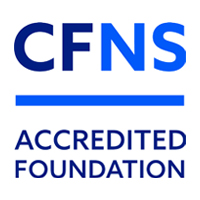Avoiding Scholarship Displacement
Students and parents, this post is to help you keep every local scholarship dollar awarded. The over-arching message is: communicate with your school’s finance office and understand their offer to you. Make sure all additional scholarships are added to your school’s financial aid package, and follow through when bills arrive.
Scholarship displacement is when a college or university reduces a student’s financial assistance by the amount of a new, “private” scholarship, rather than adding the new scholarship to the student’s aid package.
If you receive one or more “private” scholarships (that is, a scholarship from anyone other than your college), we urge you to make sure that your awards are added to the aid that your college promises you. None of your local scholarships—including any Community Foundation scholarships—should be replacing or reducing the grants or scholarships you were offered by your college.
Here are our tips on how to avoid scholarship displacement:
- Read your financial aid letters. Once you’ve been accepted by a college or university, if you apply for financial aid, you should receive a financial aid offer letter from each school. Your aid package may include a mix of loans, work study, grants (including a Pell Grant), and other scholarships. Keep these financial aid letters, read them, and understand them.
- Choose your college according to your aid package, and how they would handle any local scholarships you receive. Once you have picked your top two or three schools, talk to them about the aid they have offered you. Call the financial aid offices and ask them how they’d apply any local scholarships you receive to the financial aid package that they have offered you. Make sure you understand every single part of your aid package:
-
- What’s a loan, and what’s not a loan.
- You want your scholarships to remove the loans (and work study) off your package, or “unmet need”
- What’s guaranteed to renew, and what’s not guaranteed.
-
- What are the renewal conditions (e.g., GPA, particular major, enrollment status)?
- Are they guaranteed across all four years of college?
-
- What’s a loan, and what’s not a loan.
Take notes during your call. Get that person’s name and number. You may want to base your final college selection not only on the aid they have offered you, but on how they will treat any local scholarships you receive.
- If you receive a local scholarship, make sure it is ADDED to your school’s financial aid. Once you have selected your school and receive your first bill/statement, make sure that it shows all the local scholarships you were awarded. Then, make sure that your local scholarships are used to reduce your loans, work study, or any unmet need. Compare your bill to your original financial aid offer letter, and make sure and make sure your scholarship was applied against your loans or work study or “unmet need.” Check that none of the scholarships or grants from your college were reduced due to local scholarships. Call them back if you have doubts about this or if they if they do reduce your scholarships or grants, and politely ask them to fix it. For example, they can spread out your local scholarships over several semesters or years to ensure that you benefit from every dollar you earn.
With a little extra care at the front end, you can ensure all of your hard-earned scholarship awards actually give you the full benefits you deserve.







